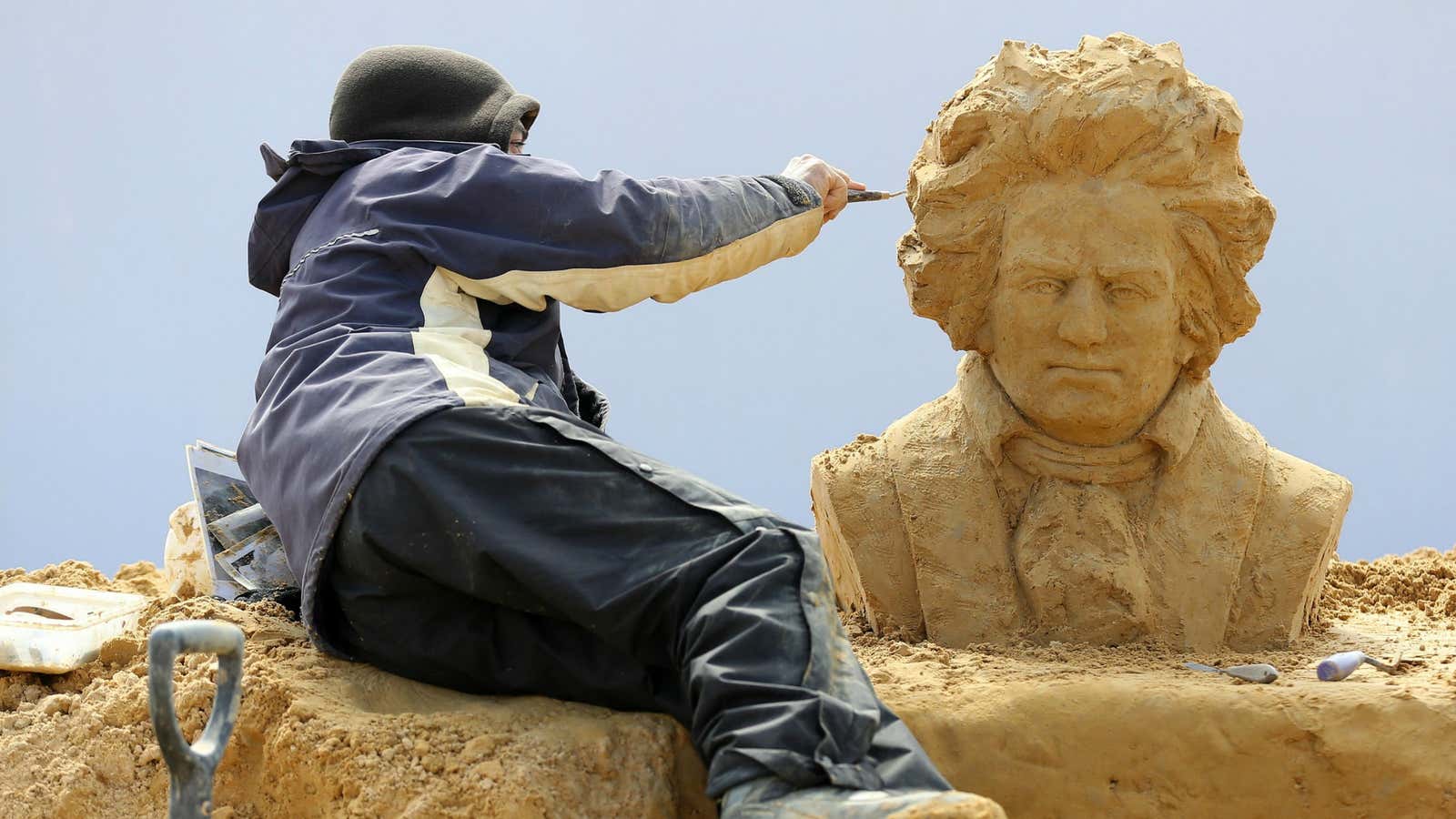PHILADELPHIA, Pennsylvania—Pianist Jonathan Biss expected an audience of 1,000 students for an online course he is teaching this semester on Beethoven’s sonatas.
By the time the course went live this morning, 32,000 people from across the world had signed up for the five-week class. The class is a collaboration between Biss’s employer, Philadelphia-based Curtis Institute of Music, and Coursera, the California-based provider of Massive Online Open Courses (MOOCs).
The number of students enrolled so far is more than seven times the total number of students who have attended Curtis since the music conservatory opened in 1924. While it’s hardly the biggest MOOC ever, this is Beethoven, not banking.
“As a classical musician, we are told all the time that we are a minority and that our audience is getting older and shrinking,” Biss, a piano studies professor at Curtis, says in a phone interview with Quartz. “You hear it so many times that you come to think that to be true.
“I am flabbergasted by the response,” he says.
The class, the first of its kind for Curtis, targets amateurs and professionals. Coursera, which made its debut last year, has in the past partnered with universities such as Yale, Northwestern and Columbia, bringing virtual classrooms to homes and offices, coffee shops and morning commutes. This is the first time it paired with a music conservatory. Among Coursera’s popular classes are Foundations of Business Strategy, Gamification and Introduction to Mathematical Thinking. Students enrolled in these courses learn by watching short video lectures, taking interactive quizzes and participating in peer-graded assessments. It isn’t unusual for thousands to sign up for classes. According to Coursera, its most popular classes are Think Again: How to Reason and Argue with 172,761 students signed up and Introduction to Finance University with 118,856.
But, despite their mass appeal, many educators are wary about the proliferation of MOOCs, citing concerns that they threaten jobs and don’t offer the same experience and value as brick-and- mortar classrooms. There’s also a lurking fear that MOOCs could dilute a brand, by welcoming the masses into otherwise exclusive programs. And, of course, many people who sign up for these courses never even bother to show up.
Officials at Curtis considered all of those factors before deciding to partner with Coursera. Curtis accepts 165 students each year and each trains one-on-one under faculty. A mass classroom is completely different from what the conservatory stands for.
“We wanted to reach out and advocate for music to the world,” says David Ludwig, dean of artistic programs at Curtis. Ludwig is also co-teaching a class titled Western Music History through Performance, which will be launched through Coursera on Oct. 1.
Biss, who is involved in a decade-long project of recording all of Beethoven’s sonatas, has already filmed his lectures. They are a combination of instruction and performance, he said. Each lecture is punctuated with breaks, allowing students a chance to track the materials. There will be homework assigned each week, and assignments will be peer reviewed. Students, who finish the course, will receive a certificate of accomplishment. Here’s a preview of the course:
Biss said he wants to bring in a three-dimensional element to the program, even meeting up with students at coffee shops around the world while he’s on tour. But in such a big class, individual attention is reserved for the master himself.
Beethoven is “a central figure in my life,” Biss said. “And my gaze is focused on him right now.”
